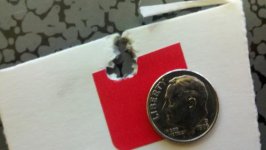kenickie22
Member
Interested in hearing your brass prep regimen. On my last lot, I uniformed primer pockets, deburred primer holes with K&M tool, full length sized with Redding die and +0.010" competition shell holder, expanded necks with K&M expand iron, trimmed length, turned necks, inside chamfered with K&M tool, neck sized with Wilson die, and finally seated with a Wilson seater die. I'm ready for my fourth loading. I should add that this is Winchester 223 brass in a factory Remington 700 PSS. Is there ever a need to inside chamfer again? I haven't cleaned my cases other than wiping the necks with alcohol, so they're reading to be cleaned. Just got the stainless steel media to use in my Thumblers Tumbler, so will try it out this weekend. I have new Lapua brass that I want to try out, but want to make sure I'm doing everything right before I mess with it. My cases still chamber ok, so I haven't full length sized again yet. At what point will I want to start thinking about annealing? Anything you would do differently? Thanks!


